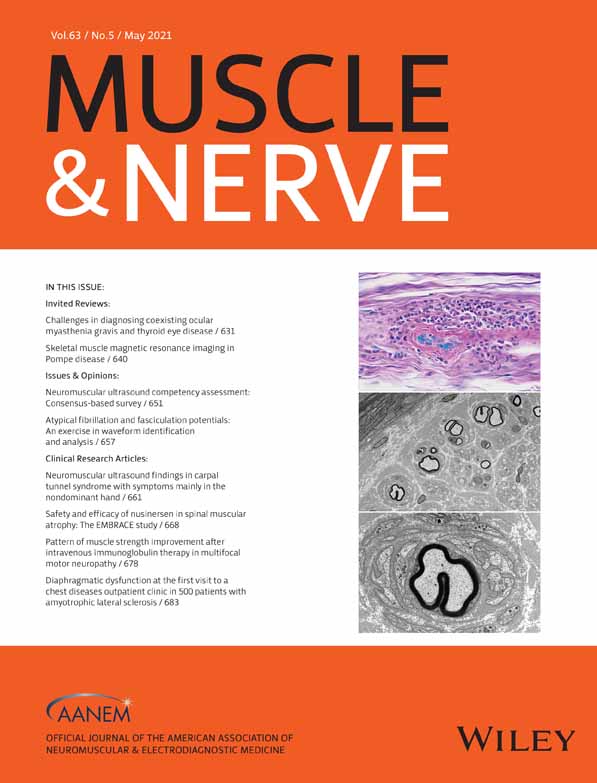Preserved eye movements in adults with spinal muscular atrophy
Abstract
Introduction
Spinal muscular atrophy (SMA) most prominently affects proximal limb and bulbar muscles. Despite older case descriptions, ocular motor neuron palsies or other oculomotor abnormalities are not considered part of the phenotype.
Methods
We investigated oculomotor function by testing saccadic eye movements of 15 patients with SMA. Their performance was compared with that of age-matched healthy controls. Horizontal rightward and leftward saccades were recorded by means of video-oculography, whereas subjects looked at light-emitting diode targets placed at ±5°, ±10°, and ±15° eccentricities.
Results
No differences in saccade amplitude gains, peak velocities, peak velocity-to-amplitude ratios, or durations were observed between controls and patients. More specifically, for 5° target eccentricities, patients had a mean saccadic peak velocity of 153°/s, whereas for 10° and 15° these values were 268°/s and 298°/s, respectively. The corresponding mean peak velocities of the control group were 151°/s, 264°/s, and 291°/s.
Discussion
Our results indicate that patients with SMA perform fast and accurate horizontal saccades without evidence of extraocular muscle weakness. These quantitative oculomotor data corroborate clinical experience that neuro-ophthalmic symptoms in SMA are not common and, if present, should prompt suspicion for an alternative neuromuscular disorder.
CONFLICT OF INTEREST
S.X. received congress sponsorship from Biogen. G.P. received congress sponsorship and advisory board honoraria from Biogen. The remaining authors declare no conflicts of interest.
Open Research
DATA AVAILABILITY STATEMENT
The data that support the findings of this study are available from the corresponding author upon reasonable request.




